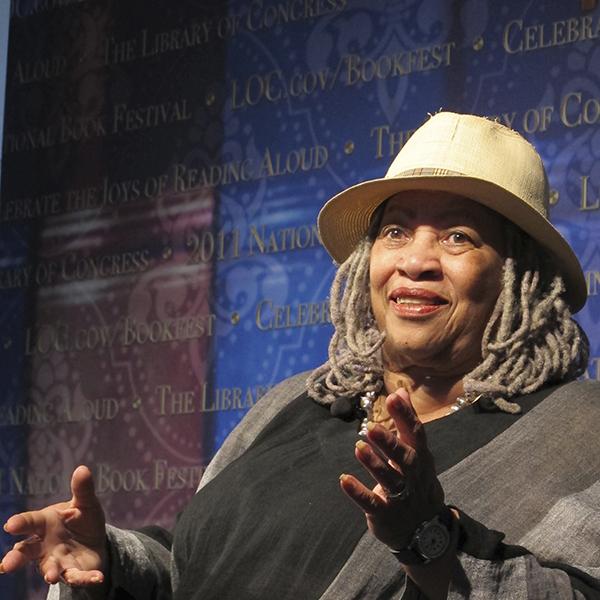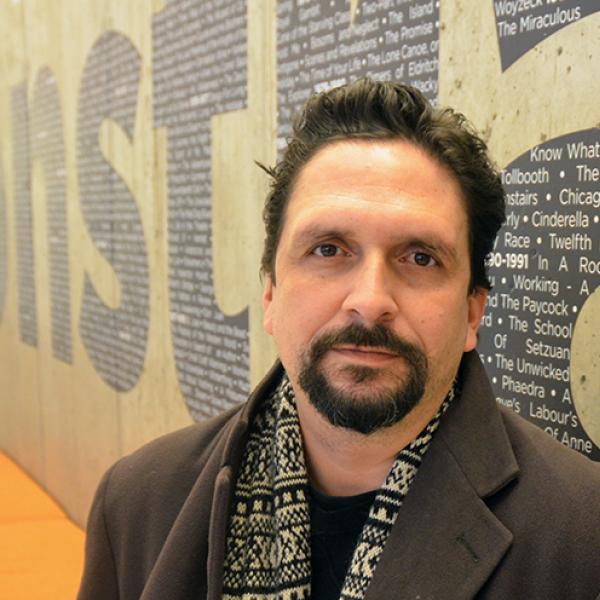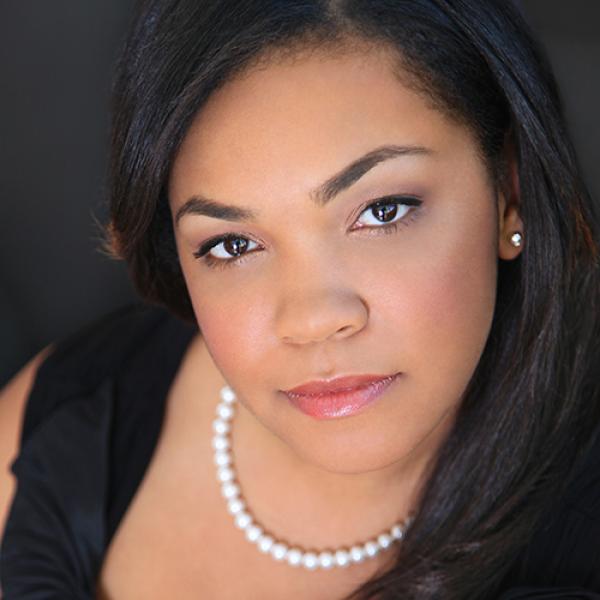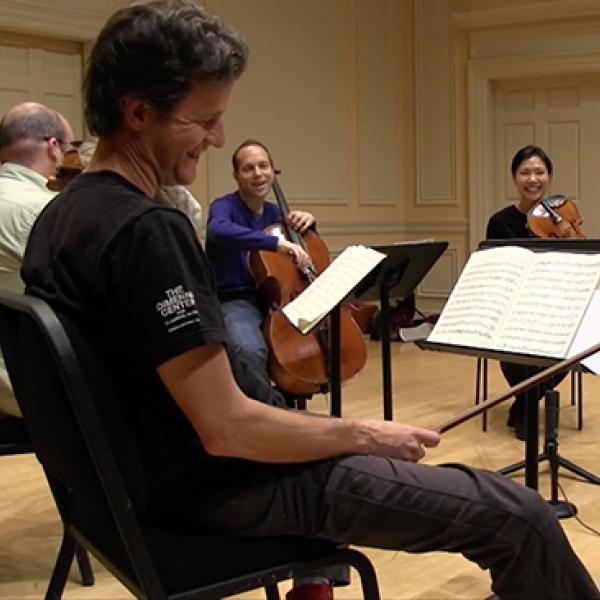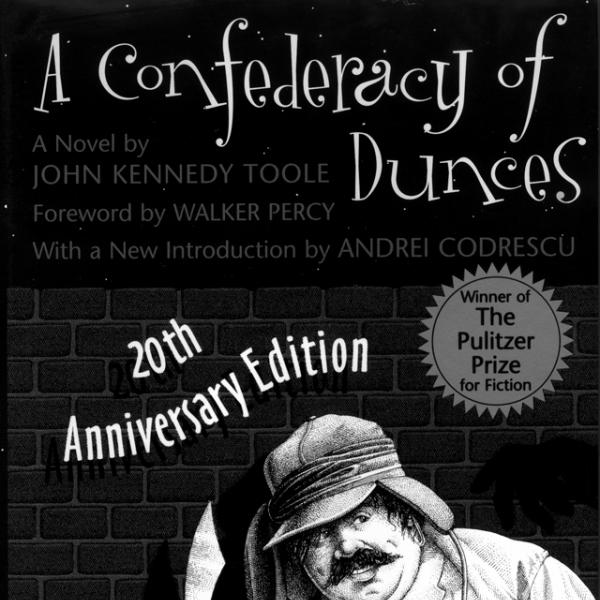Geoff Nuttall
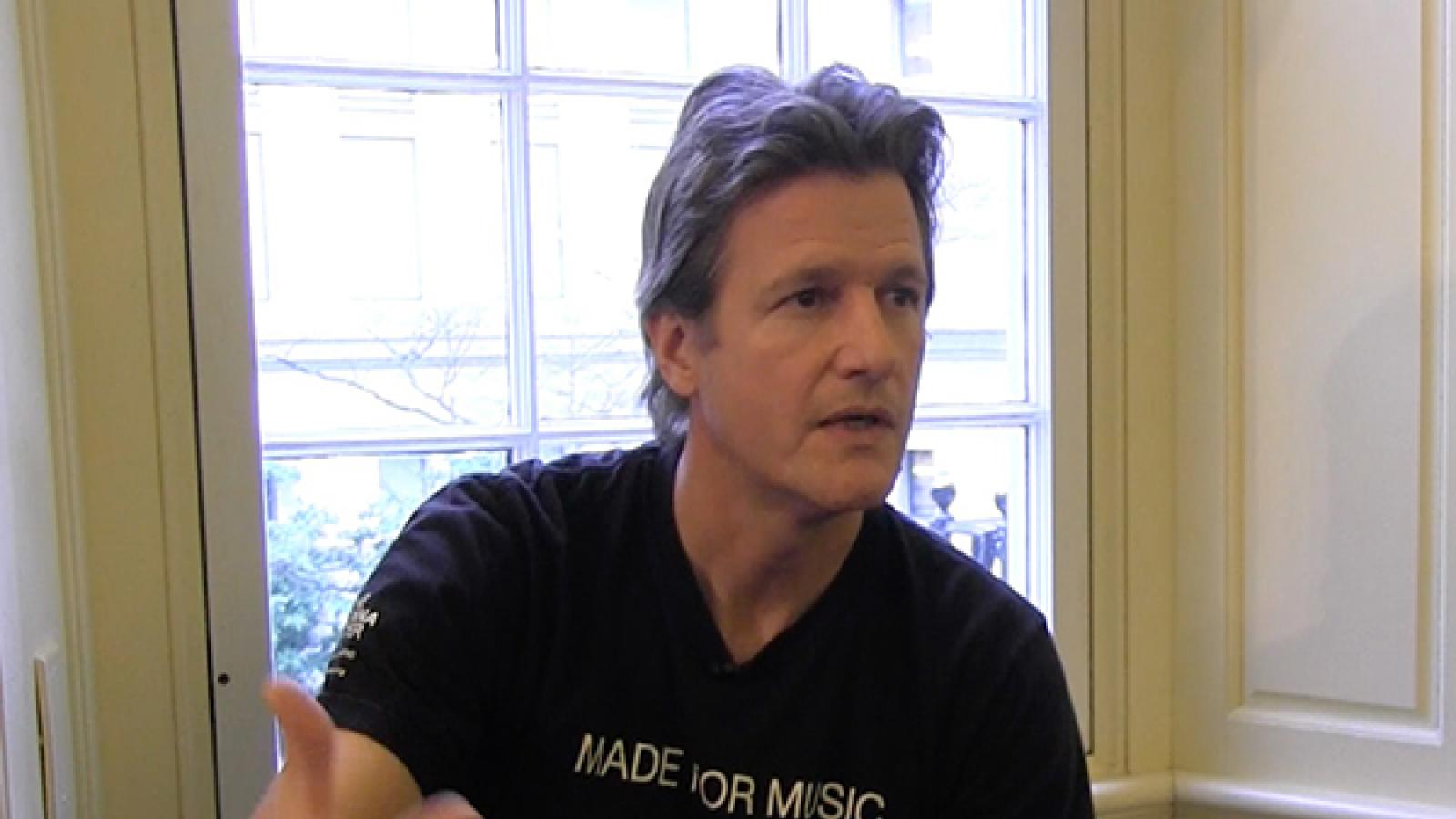
The St. Lawrence String Quartet celebrated their 25th anniversary in 2014 as one of the premier ensembles playing classical and contemporary compositions. They have released award-winning recordings of works by Robert Schumann, Pyotr Tchaikovsky, and Dmitri Shostakovich, as well as by contemporary composers such as John Adams, Osvaldo Golijov, and Jonathan Berger. Since 1998, the quartet has been the ensemble-in-residence at Stanford University, working with music students and collaborating with other departments on myriad topics. The ensemble also has been a featured artist on many NEA-funded projects over the years. We recently met with Geoff Nuttall, first violin and co-founder, as the ensemble prepared for their performance at the Library of Congress’ annual Stradivari Anniversary Concert. He spoke about how taking risks in chamber music—and its inherent potential for failure—has helped the group succeed over the past two decades.
Working with Composers
When you’re working with composers who are alive, which is about 30 percent what we do, your main goal is to somehow get their creative vision out to the audience. And some composers are more particular than others about how you go about doing that. Our first and most important goal is to make him happy in terms of, “That’s how I wanted it to sound,” or, “That’s how I wanted the audience to feel at that moment.” So failure, for me, is if a piece isn’t well received. If people go, “You guys did fine, but it’s not a great piece”—that’s our failure, not the piece’s failure.
I remember when we premiered John Adams’ first string quartet (and it’s a beast). It’s really hard, and we worked to learn it and get it out there. We didn’t get lost in the premiere. Right after the concert, John came back and said, “You know, there’s a section here, it’s just not working. I’m going to cut it.” This was like a hundred measures of the most difficult music in the whole piece. We automatically assumed that’s a failure. We failed, because we didn’t make it work. He said, “It’s not that. It’s about the shape of the thing.” But that was a really interesting example of maybe if we’d done it better or more convincingly, then he would not have changed that work of art.
There’s nothing worse than the composer’s written the piece, and he comes and says, or she comes and says, “Yeah, just make it sound good. Do the best you can.” I’d much rather have him say, “I really want you to do this here.” So if somebody comes to us after we’ve played it and says, “That’s not working,” for whatever reason, that’s great. And that kind of failure leads to a better understanding of what the composer’s trying to get across, and, hopefully, an improvement on how we can get that across to the audience in the end. So criticism from composers is the best—before, during, and after performances of new work.
New versus Old Music
The act of creating new music really helps how you approach Beethoven. And the reverence that you give the late-period string quartets, like every note is the gospel according to Ludwig and we have to be on our knees and we can’t stray from the score and that kind of dedication, is very important. Basically you want Beethoven to sound like new music, and you want Adams or Golijov or Berger, whoever, to sound like you’ve played it 50 times and it’s the greatest string quartet ever composed.
The problem, I think, is that this music is not always accessible or gettable on first hearing. Late Beethoven is not—it’s really hard. And new music is even harder. You’re dealing with people who are hearing this expressed for the first time, often in a language that they don’t completely understand. Even classical-period sonata form, a lot of the people in the audience will not get that.
So when you play both old and new music, but new music especially, you have to enunciate it in a way that allows people to understand what’s going on. But that’s a real challenge, for players and audiences alike. Personally, I like to play things a lot in public to get comfortable. And it’s a weird thing, because you’d think, “Well, the more you do it, the easier it gets, and the more sort of boring and pedestrian and locked into the groove it will get.” For us it’s not like that. The more you play it, the more you rehearse, the more you have that experience of a live concert, the more freedom you have to really go for it. The more freedom you have to really get to the point of total failure, because you’ve been there many times before.
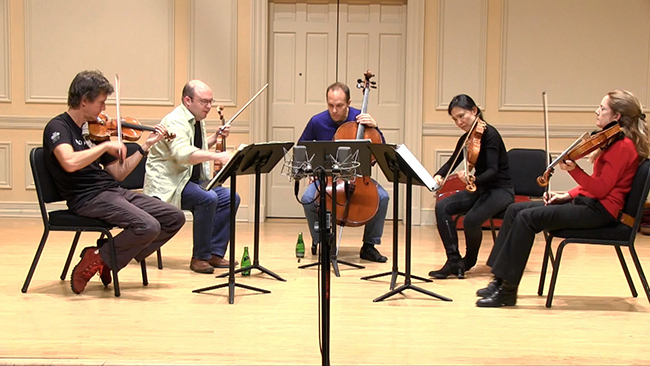
The St. Lawrence String Quartet—with guest artist violist Hsin-Yun Huang—rehearsing Mozart’s String Quintet in G Minor (from left: Geoff Nuttall, Mark Fewer, Christopher Costanza, Huang, and Lesley Robertson).
Recording versus Live
The fear of failing on a record is horrible. That’s why making records is so hard. Because it’s not the moment in time. The great thing about live music is this sense of improvisation and discovery and risk-taking. Yet I’m convinced that if you’re going for it in a way that the audience can understand, it doesn’t really matter if you mess up or not. It’s the act of going for it. On a record, it’s there for posterity. So for me, the fear of failure on a record is sometimes debilitating, because constantly your brain is going, “Oh, this is going to be out there forever,” and so you have to get away from that. The hardest thing for me about recording, and I think for a lot of people, is to not be careful. The danger, of course, with all this technology, is that they edited out all the good stuff, the snorts and blood and crap, which is part of the excitement of a live performance. So recording is one type of fear of failure, which is really prominent and not fun.
For me, playing live—nerves are always there. When they limit what you can do, it’s bad. You play for 25 years in a string quartet, play 100 shows a year—but it took a couple years for me to not be non-functioning because of nerves, which is just fear of failure. It’s not even something you can put your finger on. There are all these different ways to get around that, but the most obvious and simplest one to explain is you go out there and you play enough times that you start to feel comfortable in that environment. I think I’d be sort of freaked out if I didn’t get nervous. But you want to channel that energy and be just enough on the edge before you fall off to make the act of creation exciting.
The Problem with the Internet
Recording a string quartet on video, it’s a pale limitation. So much of the power is the subtlety of silence and the act of 300 people listening really intently in a room. It’s not replaceable on the Internet. Chris Rock’s stand-up is not quite as exciting maybe [when you watch it on video], but you get the gist of it. You lose a lot of the gist of what’s great about a live string quartet concert when you watch it on YouTube.
Silence is totally different when you’re watching on YouTube than it is when you’re actually in the hall. And that’s a crucial part of what we do. For me, that experience, and the possibility of silence, is such a huge part of the process of both playing and listening.
Unusual Influences
I have 10,000 LP records in my living room. So I listen to music all the time. It’s really cool to hear the old Busch Quartet recordings, or Adams to hear [what’s really going on in] Nixon in China. Recordings are an incredible resource, but I find myself being more inspired by Dylan and Johnny Cash and Miles Davis and blues singers and opera. So a lot of the influences are much more eclectic. A string quartet is officially really about being together. You really want to be unified and blended together. And I remember being inspired by Nashville Skyline, the Bob Dylan record. He does a duet with Johnny Cash. It’s such a great record, and they’re not together at all. They’re totally doing their own thing, but it’s totally unified and really powerful at the same time. And that was a great lesson on ensemble playing. Because if each one of the duet is doing their own thing in a really committed and convincing way, even if you’re saying the same thing, which they were in that case, it can be more powerful. Imagine if those guys were in tune and together for that. It would be terrible.
Here’s a great example of failure. If you’re really trying to be together and in tune and you’re not, that’s failure because people can tell you failed. But if you’re totally committed to sing something that happens to be different and not quite the same in terms of intonation or inflection or timing than your colleague, then that’s powerful, even though it’s officially a failure from a string quartet point of view. So for example, listening to that, Dylan in general, but that song in particular, is a really interesting and powerful learning tool about the art of ensemble playing.
Fear of Emotional Failure
It is not possible to sound any good in quartet without many, many hours of playing together and practicing and learning pieces. I’m constantly telling students that. But they forget that that’s just the first step. The hard part is to go take that tool, ensemble playing, and make the music really vital and invigorating for the audience that they’re playing for.
That’s why performing is so cool. You have to have the ability, depending on the situation, to go to the place that the composer’s asking you to go to.
The fear of emotional failure, I think, is really hard for young people especially. Because you have to go to places sometimes that involve putting stuff out there emotionally that’s not part of who you are, whether it be openly elated or brutally angry or devastated. In great music, that’s the whole point. It’s about emotion and it’s about connecting to emotions from music. Many times, the problem for young players is not that they’re not great. It’s that they’re afraid to go to these places, to take themselves emotionally to places that may be embarrassing, that may involve some sort of personal failure. It’s one thing to say, “It’s happy music. Then I’m going to use more vibrato or something.” No. The first step is to be able to take yourself to that place. And the hardest thing is that you have to do that over and over and over.
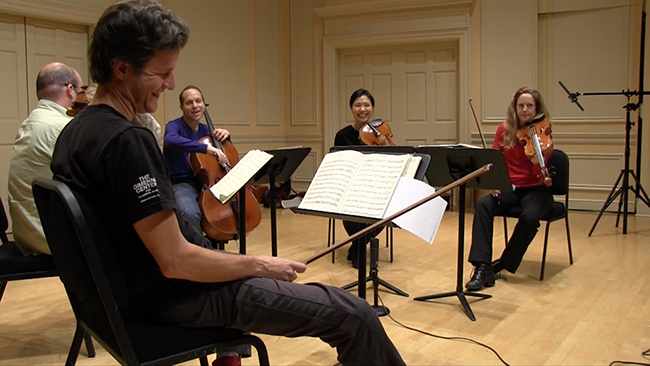
The St. Lawrence String Quartet, with Hsin-Yun Huang, at rest.
Finding Balance
You have to find a balance between thinking you’re tremendous and thinking you’re horrible. Because if you go one way or the other too much, then you’re going to fail. Over-confidence is almost worse than not being able to function because you think you suck. It’s a constant self-awareness and the ability to realize what went wrong and how to fix it, or you’re not going to get better. That’s the great thing about music—you get better as you get older. I’m going to be 50, and I’m better than I was when I was 25.
That balance is a constant one. And without the confidence to think you’re doing something interesting and you have the ability to trust your instincts to connect to the music, to the audience, you will fail. But if you’re not constantly second-guessing your ability intellectually and emotionally and musically, technically, you won’t get any better. You may just reach a point of mediocrity.
So failure’s crucial; it’s just that there’s no other way. You can’t escape it. It’s constant. The trick is to not let your failures affect the emotional experience of the audience in terms of getting what’s going on in the music is the bottom line. If you really go for it and fail, it’s okay. If you don’t go for it and fail, that’s all people remember. So that’s really important and interesting in the balance as well.
All photos by Adam Kampe


